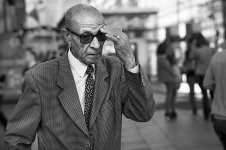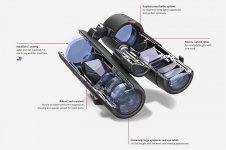Alexis Powell
Natural history enthusiast

All of that is true Canip but it is not the full story, at least for my eyes, because just looking at the man's face I can see a strong 3D effect. His head definitely has a back and a front and his ear is further away than his nose. None of this is connected with the out of focus background which, as you say, is just a function of a wide aperture and small depth of field...
I think seeing 3D in a nonstereo flat media photograph is crazy talk. I'm light spirited in my criticism, but I'm serious. The only way to see depth in this circumstance is to reconstruct it from knowledge of the subject and subsequent interpretation of lighting as revealing hills and valleys. That's why photos of unusual concave objects are so easily misinterpreted as more familiar convex ones. Effects of foreshortening etc are almost impossible to judge without cues from familiar objects accompanying them. That's why it is sometimes hard to tell from a single photo if e.g. a gull actually has a short round head and short bill or whether it has its long head and bill angled slightly toward the camera.
We've got some very visually aware people here on Birdforum, so it's driving me crazy that no one has provided an objective description of the optical properties of the Noctivid, or what it is about the view through them that sometimes inspires enhanced feeling of depth or greater depth of field.
--AP









